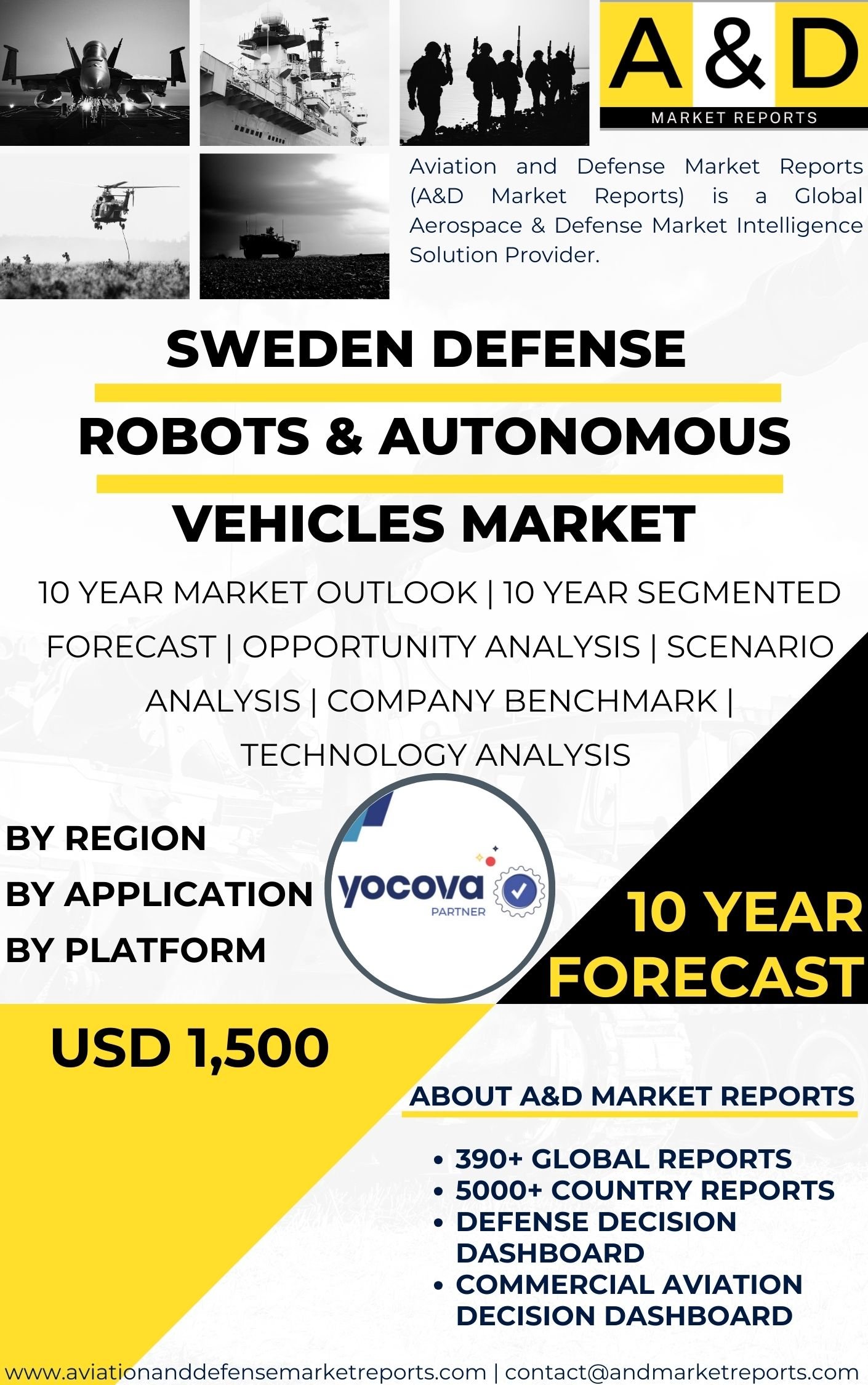Description
The Sweden Defense Robots & Autonomous Vehicles Market has witnessed significant growth and technological advancement in recent years, driven by the increasing demand for unmanned systems in military applications. Robotics and autonomous vehicles play a critical role in enhancing Sweden’s defense capabilities, enabling various functions such as reconnaissance, surveillance, target acquisition, logistics support, and hazardous operations without putting human lives at risk. Sweden’s strong focus on innovation, technological expertise, and commitment to defense modernization has positioned it as a key player in the global defense robotics and autonomous vehicles market.
The strategic importance of unmanned systems in modern warfare has led to the widespread adoption of robotics and autonomous vehicles by defense forces worldwide. Sweden’s defense industry, supported by government funding and research institutions, has actively engaged in the development and production of advanced robots and autonomous vehicles to cater to the nation’s defense needs and export to international partners.
One of the primary applications of defense robots and autonomous vehicles in the Sweden Defense Robots & Autonomous Vehicles Market is in reconnaissance and intelligence gathering. These unmanned systems are equipped with advanced sensors, cameras, and communication equipment, enabling real-time surveillance and data collection. Robots and autonomous vehicles provide a cost-effective and low-risk means of conducting aerial and ground reconnaissance over sensitive areas, allowing the military to obtain critical situational awareness without exposing personnel to potential threats.
Additionally, defense robots and autonomous vehicles play a significant role in Sweden’s homeland security and border surveillance efforts. Unmanned aerial vehicles (UAVs) equipped with high-resolution cameras and infrared sensors enhance surveillance capabilities, enabling the detection of unauthorized activities, smuggling, and potential security breaches along the country’s extensive coastlines and land borders.
In the naval domain, autonomous underwater vehicles (AUVs) are increasingly utilized for mine countermeasure operations and underwater reconnaissance. These AUVs, equipped with sonar systems and advanced sensors, can navigate autonomously to detect and neutralize sea mines, enhancing the safety and effectiveness of naval operations.
Moreover, the Sweden Defense Robots & Autonomous Vehicles Market caters to the development and deployment of unmanned ground vehicles (UGVs) for logistics support and hazardous operations. UGVs can transport equipment and supplies across rugged terrains, providing crucial support to ground forces. They can also be used for explosive ordnance disposal and other dangerous tasks, minimizing the risk to human personnel.
As technology continues to advance, the market is witnessing the integration of artificial intelligence (AI) and machine learning algorithms into defense robots and autonomous vehicles. These advancements enable autonomous decision-making, intelligent mission planning, and enhanced data processing capabilities. Autonomous systems can perform complex tasks with minimal human intervention, enabling swarming capabilities, wherein multiple unmanned vehicles collaborate in synchronized operations.
In recent years, the Sweden Defense Robots & Autonomous Vehicles Market has also seen an increased focus on the development of counter-robot and counter-drone solutions. With the proliferation of unmanned systems in both military and civilian domains, the risk of hostile drone and robot activity has grown. Sweden’s defense industry has invested in developing systems to detect, track, and neutralize hostile unmanned vehicles, safeguarding critical assets and infrastructure from potential threats.
International collaborations are another significant aspect of the Sweden Defense Robots & Autonomous Vehicles Market. Sweden’s expertise in robotics and autonomous systems has led to partnerships with other countries seeking advanced UAS capabilities. These collaborations not only strengthen defense cooperation but also facilitate technology transfer and promote Sweden as a reliable supplier of advanced unmanned systems.
Moreover, the market has witnessed a growing trend towards the miniaturization and portability of defense robots and autonomous vehicles. Compact and lightweight unmanned systems provide increased mobility and flexibility, enabling their integration into a wide range of military platforms and applications. These advancements contribute to the adaptability and versatility of Sweden’s defense capabilities, enhancing the nation’s readiness to respond to various threats and scenarios.
The Sweden Defense Robots & Autonomous Vehicles Market is not limited to military applications alone. The dual-use nature of robotics and autonomous systems allows for civilian applications, such as disaster response, environmental monitoring, and transportation. The adoption of these technologies in civilian sectors contributes to the growth and advancement of unmanned systems, benefiting both defense and non-defense industries.
Looking ahead, the future of the Sweden Defense Robots & Autonomous Vehicles Market remains promising, driven by continuous research and development efforts, international collaborations, and the increasing demand for advanced unmanned systems in modern warfare. As technology evolves and the role of robotics and autonomous vehicles in defense continues to expand, Sweden’s dedication to innovation and adaptability will solidify its position as a leading player in the global defense robotics and autonomous vehicles market. The market’s ability to cater to diverse defense requirements while embracing technological advancements will ensure that Sweden’s defense forces remain at the forefront of unmanned capabilities, enhancing the nation’s defense readiness and contributing to global security efforts.




